- Home
- Joan Smith
Clouds of Deceit Page 6
Clouds of Deceit Read online
Page 6
As might have been expected, William Penney played a crucial role in bringing the government to the point of taking an official decision to make the atom bomb. In 1946, Penney was Chief Superintendent of Armament Research at the Ministry of Supply. Against a background of pessimistic attempts to secure international arms control, Penney came up with a scheme for an Atomic Weapons Section in his research department.
Penney’s scheme was sent to Lord Portal, who was Controller of Production at the Ministry of Supply. Penney said the section would need to do two types of work: the production of fissile material, and the manufacture and assembly of other parts of the bomb whose function would be to trigger the explosion. The second part of the work could be argued to be conventional weapons research, he wrote, although this could not be maintained with a clear conscience.
As a result of Penney’s letter to Portal, the Ministry of Supply agreed that Penney should have this responsibility. This decision was taken before the government had formally decided to make the bomb. Portal wrote a memo to the Prime Minister, who raised it with an ad hoc meeting of ministers called Gen 163. This meeting, held in early January 1947, was attended by only Clem Attlee, Ernest Bevin, Herbert Morrison (Lord President of the Council), A. V. Alexander (Minister of Defence), Lord Addison (Secretary of State for the Dominions) and John Wilmot (Minister of Supply).
One of the curiosities of the whole affair is that the ad hoc committee which gave the go-ahead for the bomb project, Gen 163, was not even the same committee which had been meeting to discuss atomic affairs since August 1945. This committee, which met as Gen 75, had been referred to by Attlee as his Atom Bomb Committee and yet three ministers from Gen 75 did not even attend the Gen 163 meeting.
Gen 163 decided Britain should go ahead with a bomb programme. Penney was told some four months later, in May, and given control of the work, which was to take place under the innocuous title of High Explosives Research. (It was a euphemism which persisted for some years. The Australian Royal Commission was given in 1985 a formerly confidential report which dealt with the meteorological conditions in which the first bomb in the Totem test series in South Australia could be fired: its title was High Explosives Research Report No A32, and its date May 1953.)
If the Attlee government’s decision involved moral principles, it does not seem to have given the ministers who took it much pause for thought. Ernest Bevin, for one, did not want to hear any arguments against Britain’s acquiring the bomb. When the distinguished scientist, Patrick Blackett, who sat on the government’s own Advisory Committee on Atomic Energy, suggested Britain should refrain from developing her own deterrent, Bevin gave the idea short shrift. ‘He ought to stick to science’ was the reply he scribbled to Blackett’s suggestion. Clearly, this was not the sort of advice the Advisory Committee was supposed to be giving.
On 12 May 1948, an MP called George Jeger asked a question of the Minister of Defence, A. V. Alexander, in the House of Commons. The question was a plant: its object was to allow the Labour government to admit it was making atom bombs with as little fuss as possible. Was the minister satisfied, Jeger asked, that ‘adequate progress’ was being made in ‘the development of the most modern types of weapon’?
‘Yes, sir,’ Alexander replied. ‘As was made clear in the Statement relating to Defence 1948, research and development continue to receive the highest priority in the defence field, and all types of weapons, including atomic weapons, are being developed.’ (My italics.)
The spirit in which the Labour government made this admission can be judged by the event which accompanied it. This was the gagging of the press by the issuing of a D-notice which forbade reference to the type of atomic weapons being developed, where the work was being done, who was doing it, and where the weapons were to be stored.
Margaret Gowing has said that the Prime Minister, Clem Attlee, and the Foreign Secretary, Ernest Bevin, became ‘paranoic’ about the release of information on the atom bomb programme. It was also the case, she said in a film on the nuclear industry, Unstable Elements, that ‘the press really probed very little and the public suffered as a result’.
How far journalists would have got, if they had had the inclination to do a bit of investigating, is doubtful. The decision that Britain would build the atom bomb was taken in conditions of such secrecy that many members of Attlee’s cabinet were not privy to it. Even after the public announcement, if A. V. Alexander’s throwaway line deserves to be counted as such, ministers managed to conceal from parliament what they were spending on the project: when Churchill returned to power as Prime Minister in October 1951, he was astonished to discover that the Labour government had covertly spent nearly £100 million in this way, unbeknown to the House of Commons.
After a brief pause, Churchill decided to honour this useful tradition. On 4 March 1954, a Cabinet committee chaired by Churchill agreed to conceal the extent of the nuclear weapons project by hiding it under innocuous headings like ‘other current expenditure’ and ‘extra-mural research’. Churchill’s government also decided that, although its decision in July 1954 to develop the hydrogen bomb would undoubtedly offend many British people, it was Attlee’s government which had set Britain on this rocky moral road in the first place: ‘insofar as any moral principle was involved, it had already been breached by the decision of the Labour Government to make the atomic bomb,’ Cabinet papers record.
At the time Gen 163 was taking its historic decision in January 1947, Britain was discovering how little help would be forthcoming from its wartime ally, the US. At the end of the war, Britain had rested hopes of cooperation on the Hyde Park Agreement, signed by Churchill and Roosevelt in 1944. This said that full collaboration would continue after the defeat of Japan until ended by joint agreement.
After Roosevelt’s death, the British discovered that no one else in America seemed to know about it. But when Attlee flew to the US in November 1945, the result of talks with President Truman and the Canadian Prime Minister, Mackenzie King, seemed encouraging. An agreement was signed which said, ‘There shall be full and effective cooperation in the field of basic scientific research among the three countries.’
In February 1946, Britain put the new agreement to the test by asking the Americans for information about building the piles needed to produce plutonium - the American government at this time knew far more about Britain’s atomic plans than the British people or even, for that matter, a sizeable chunk of the British Cabinet. The US wanted Britain to build its piles in Canada; Britain, the Americans said, was too vulnerable to enemy attack. The British government refused and found that the information it needed was not handed over. Three months later, Britain did manage to secure an agreement with the US which assured its access to uranium ore - less than twelve months later, movements of uranium became the subject of a D-notice in Britain.
In August 1946, the possibility of cooperation with the US was abruptly extinguished. An act on the control of atomic energy in the US, named after its sponsor, Senator Brien McMahon, became law in that month. Clause 10(a) introduced restrictions on the sharing of a wide range of data about atomic energy. McMahon later said he had discovered the existence of secret agreements between the US and Britain only after the bill became law. Nevertheless, the effect of the act was, as Leonard Bertin wrote in 1955, to create ‘a fantastic situation in which the United States completely slammed the door on her British friends’.
Bertin was writing at a time when British feelings about what seemed churlish and ungrateful behaviour on the part of the Americans were close to the surface. It was certainly the case that Britain had to get on with its own bomb programme more or less unaided until the mid-1950s, when American admiration for the British project promoted renewed collaboration.
But Margaret Gowing stresses that the British decision to make the atom bomb was not taken as a result of the McMahon Act. ‘The decision was’, she writes, ‘a symbol of independence.’ Even if relations with the US had been better, Attlee’s
view was clear: ‘If we had decided not to have it, we would have put ourselves entirely in the hands of the Americans. That would have been a risk a British government should not take… For a power of our size and with our responsibilities to turn its back on the Bomb did not make sense.’
The effect of the withdrawal of US cooperation did have important effects, however. It meant that Britain had to find out for itself, through trial and error, the answers to questions which the Americans already knew. It also led to the testing of British weapons in Australia.
‘The inherent stupidity of an independent test in Australia, when the Americans had such well-developed test sites, had led to long meetings and cables and a final transatlantic dash by Penney,’ says Margaret Gowing. ‘But though the Americans had finally expressed their willingness to help, they had felt bound to impose so many restrictions and conditions under the McMahon Act that the Chiefs of Staff and all the departments concerned had unanimously concluded that the test should be held after all in Australia.’
Chapter Three
Operation Hurricane
3 October 1952, Monte Bello Islands
The ‘inherent stupidity’ of testing the first British atom bomb in Australia lay in the huge effort required to prepare such a distant and inhospitable site for the explosion. The Monte Bello Islands could not even provide a supply of water for the number of people involved in the test in one way or another - 1,100 British and Australian personnel as the time for the test drew close.
Once again, the British had a lot to thank the Australian government for; the Australian armed forces obligingly helped out with several vital tasks. In February 1952, for instance, the No. 5 Airfield Squadron of the Australian air force, the RAAF, constructed a freshwater pipeline on the mainland which brought water to a jetty near the mouth of the Fortescue river. Throughout the entire operation, all the water needed in the Monte Bellos was taken from this jetty by an Australian navy water lighter across the fifty miles to the islands.
The Royal Navy supplied five ships for the operation, which was given the code name Hurricane. It was carried out under the overall control of a senior naval officer. Ninety-nine scientists travelled by ship to the islands, the majority of them on HMS Campania, where relations between the civilians and the navy became decidedly strained. Other scientists, including Penney, were luckier: they flew to Australia in Hastings aircraft and then made the trip from Onslow, on the mainland, to the test site in the Monte Bellos in the Australian ships, HMAS Hawkesbury and Warreen.
The first two British ships, HMS Zeebrugge and HMS Narvik, left Portsmouth for the islands on 19 February 1952, one day after the two governments had made their joint announcement of the test in Australia. The two events were not unconnected, as a report compiled by the naval commander after the explosion shows. ‘By the time that Phase I ships were due to leave the United Kingdom, it was apparent that news of the operation could no longer be withheld,’ it says. ‘On 18th February a simultaneous announcement was made by the Prime Ministers of the United Kingdom and Australia… Although no mention was made of Phase I ships, when they sailed on the following day the press accurately associated them with the expedition.’
To the satisfaction of the British authorities, the press then jumped to the wrong conclusion about the exact location of the test. ‘The world press gave great prominence to the public announcements and made a general assumption that the trial would take place at Woomera,’ the report goes on. ‘This speculation was useful in assisting to keep secret the true location.’
Zeebrugge and Narvik were essentially troop ships, whose job was to transport the Royal Engineers to the Monte Bellos to prepare the site. They arrived at the islands more than two months later. HMS Campania, the aircraft-carrier which had served as a travelling exhibition during the Festival of Britain a year earlier, was designated command and base ship. On 14 May, Rear-Admiral Arthur Torlesse, the overall commander of Operation Hurricane, hoisted his flag on board Campania and a second joint announcement was made to the press. It gave the location of the test, and named Penney and Torlesse as the scientific and military leaders of the operation.
Campania sailed on 10 June, with eighty-five Ministry of Supply scientists on board. With her went the most important ship, HMS Plym, in which the bomb was to be exploded. The two ships went the long way round, via the Cape, taking two months to get to the Monte Bellos. Throughout the journey, the Plym’s cargo was kept a deadly secret - she was carrying all the bomb’s components except for the plutonium core. HMS Tracker, which was to act as the health monitoring ship, left Sheerness a few days before and took the quicker route through the Suez Canal. She arrived on the same day as Campania and Plym, 8 August.
Transporting these numbers of quite diverse people to the other side of the world inevitably produced problems. On the journey down, scientists on Campania fell out with naval officers over the subject of dress. The scientists were astonished to find they were expected to wear jackets and ties even in the hottest weather. When the navy decreed that ties must be worn at a film show one Sunday evening, the scientists turned up wearing ties but no shirts.
Film shows assumed tremendous importance in keeping boredom at bay. The naval commander, Rear-Admiral Torlesse, reported afterwards: ‘At the Monte Bello Islands the cinema was the greatest recreational interest. No amenities or amusements of a civilised port were available and nightfall put an early end to outdoor recreation. No leave was possible after dark and ships’ companies, being physically tired after working in the islands, found the cinema an ideal form of relaxation.’
Torlesse does not, unfortunately, tell us which films were provided or how he arrived at his conclusion: ‘The films supplied by the Royal Naval Film Corporation were appreciated by all ranks of the Force and played a large part in maintaining a high morale. The programmes had a high average standard of entertainment value.’
Before they left England, the scientists in charge of the weapon test recognized that conditions on the Monte Bellos would be difficult, even dangerous. One thought that two or three serious accidents among their number would be unsurprising, given the hostile nature of the environment - choppy seas and unwelcoming terrain. But the services and the government took a more robust view. Air Vice-Marshal Davis, at the Ministry of Supply, thought the operation would be ‘a grand experience combined with the fun of a picnic’; the government adhered to the opinion that taking part in an atom bomb test was a perfectly normal part of service life.
The insurance arrangements for the test reinforce this view, which depends on an expansive interpretation of the phrase ‘normal duties’. The Treasury agreed to honour insurance policies covering the lives of both service and civilian personnel if they were invalidated by their participation in the test. It also insured civilians at the test for five times their annual salary. This clause specifically excluded service personnel, however, as ‘their normal duties are regarded as covering this employment’.
Insurance cover taken out by the Treasury was valid for only seven years after the test. At the Australian hearings in London in 1985, a British lawyer pointed out that this was of little use, since the latency period - the time which it takes to develop - for radiation-induced diseases like leukaemia and cataracts is much more than seven years in both cases. Penney refused to be drawn on the subject. ‘You are asking me to speculate,’ he said. ‘It is impossible to answer because at the time we did not know what we know now.’
The government claimed at the time of the Hurricane test that ‘attributable rates of pension’ would apply to servicemen injured in the test; this clause has turned out to be a hollow promise for the majority of ex-servicemen who have since tried to get pensions for illnesses they believe they have suffered as a result of the bomb tests. The Treasury also decided that ‘the widow of any officer would not be entitled to the “killed in action” gratuity,’ which seems a little mean, given the scientists’ view that the operation might well result in people being kille
d.
The bomb that was tested in a lagoon off Trimouille Island, in the Monte Bellos, was based on Fat Man, the plutonium implosion device which devastated Nagasaki. Its purpose was twofold: to assess the effects of an atom bomb attack on the Port of London, and to establish that Britain could build a bomb unaided.
A month after the successful test, Penney made a radio broadcast. ‘When the planning began,’ he said, ‘a lot of thought was given to deciding which type of explosion would provide information and experience of the greatest value. Purely scientific measurements are most easily made when the weapon is placed at the top of a high tower, but there were other weighty considerations. The Civil Defence authorities in this country badly needed more data about atomic explosions and accordingly the test was planned to get as much novel information as possible for Civil Defence. The decision was made to explode the weapon in a ship moored near land, thus simulating an explosion in a port.’

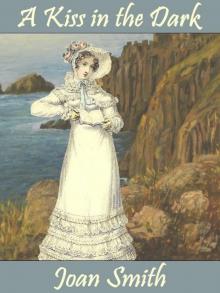 A Kiss in the Dark
A Kiss in the Dark Petticoat Rebellion
Petticoat Rebellion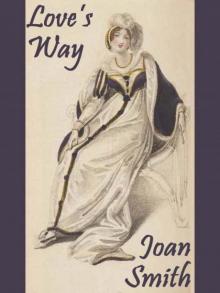 Love's Way
Love's Way Little Coquette
Little Coquette Memoirs of a Hoyden
Memoirs of a Hoyden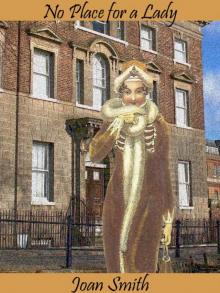 No Place for a Lady
No Place for a Lady Perdita
Perdita Talk of the Town
Talk of the Town The Hermit's Daughter
The Hermit's Daughter Moon Love
Moon Love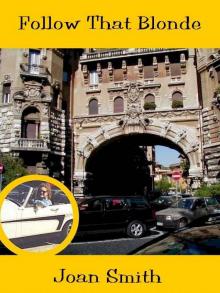 Follow That Blonde
Follow That Blonde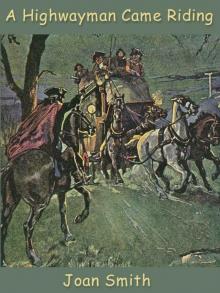 A Highwayman Came Riding
A Highwayman Came Riding The Great Christmas Ball
The Great Christmas Ball Jennie Kissed Me
Jennie Kissed Me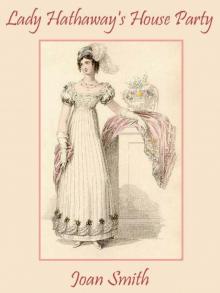 Lady Hathaway's House Party
Lady Hathaway's House Party Aunt Sophie's Diamonds
Aunt Sophie's Diamonds Sweet and Twenty
Sweet and Twenty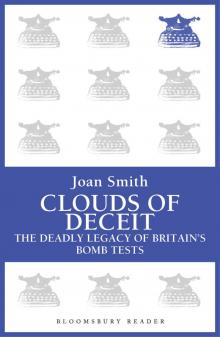 Clouds of Deceit
Clouds of Deceit What Men Say
What Men Say The Devious Duchess
The Devious Duchess Tea and Scandal
Tea and Scandal Bath Scandal
Bath Scandal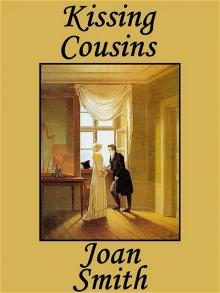 Kissing Cousins
Kissing Cousins Love's Harbinger
Love's Harbinger The Waltzing Widow/Smith
The Waltzing Widow/Smith The Polka Dot Nude
The Polka Dot Nude Thick As Thieves
Thick As Thieves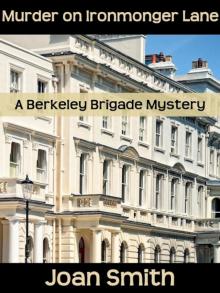 Murder on Ironmonger Lane
Murder on Ironmonger Lane Dame Durden's Daughter
Dame Durden's Daughter Endure My Heart
Endure My Heart The Savage Lord Griffin
The Savage Lord Griffin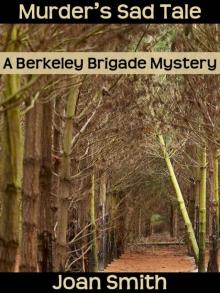 Murder's Sad Tale
Murder's Sad Tale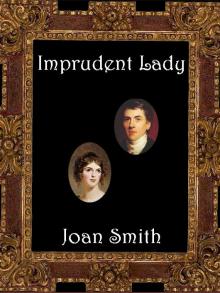 Imprudent Lady
Imprudent Lady It Takes a Lady
It Takes a Lady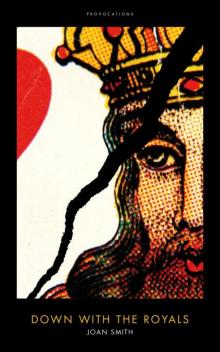 Down With the Royals
Down With the Royals Aurora
Aurora A Brush with Death
A Brush with Death The Black Diamond
The Black Diamond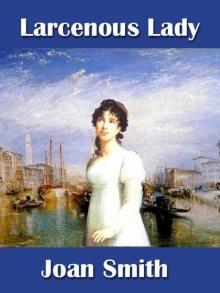 Larcenous Lady
Larcenous Lady To Mourn a Murder
To Mourn a Murder Francesca
Francesca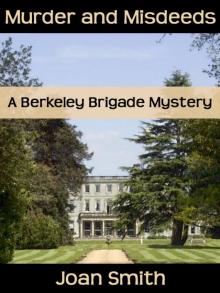 Murder and Misdeeds
Murder and Misdeeds A Country Wooing
A Country Wooing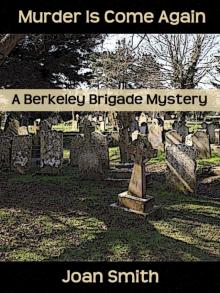 Murder Is Come Again
Murder Is Come Again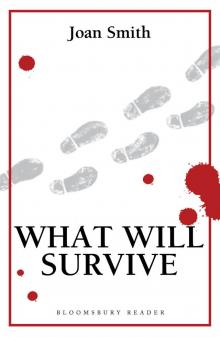 What Will Survive
What Will Survive Love Bade Me Welcome
Love Bade Me Welcome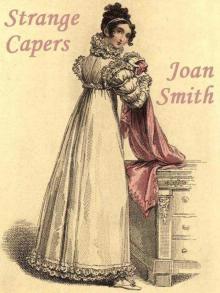 Strange Capers
Strange Capers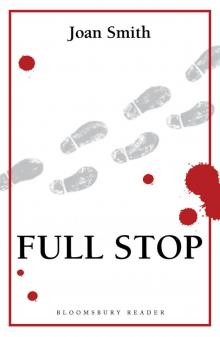 Full Stop
Full Stop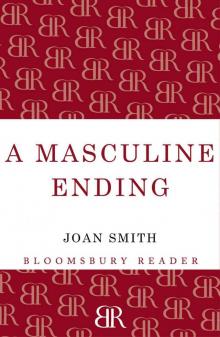 Loretta Lawson 01 - A Masculine Ending
Loretta Lawson 01 - A Masculine Ending Murder While I Smile
Murder While I Smile Winter Wedding
Winter Wedding Capriccio
Capriccio Blossom Time
Blossom Time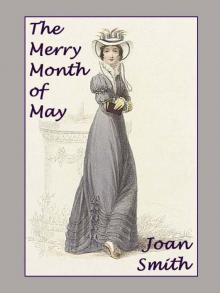 The Merry Month of May
The Merry Month of May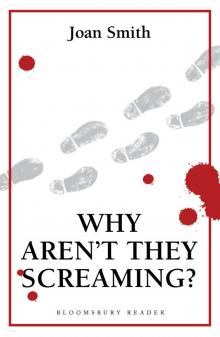 Why Aren't They Screaming?
Why Aren't They Screaming?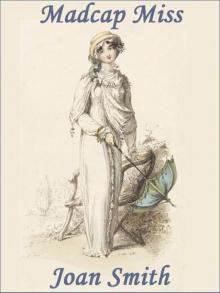 Madcap Miss
Madcap Miss Delsie
Delsie Reluctant Bride
Reluctant Bride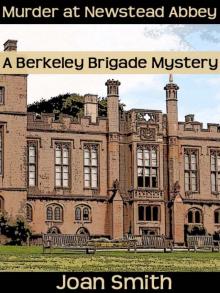 Murder at Newstead Abbey
Murder at Newstead Abbey A Tall Dark Stranger
A Tall Dark Stranger Letters to a Lady
Letters to a Lady Country Flirt
Country Flirt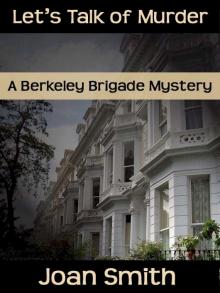 Let's Talk of Murder
Let's Talk of Murder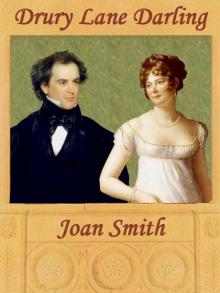 Drury Lane Darling
Drury Lane Darling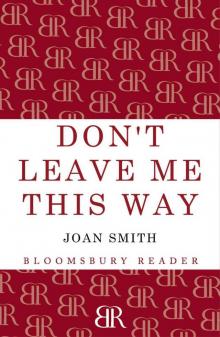 Loretta Lawson 03 - Don't Leave Me This Way
Loretta Lawson 03 - Don't Leave Me This Way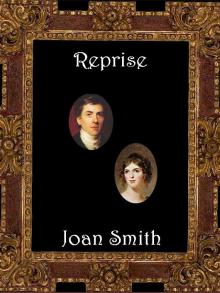 Reprise
Reprise Lady Madeline's Folly
Lady Madeline's Folly Olivia
Olivia Midnight Masquerade
Midnight Masquerade Bath Belles
Bath Belles Lace for Milady
Lace for Milady Silken Secrets
Silken Secrets Minuet
Minuet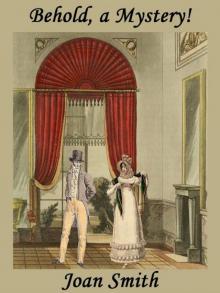 Behold, a Mystery!
Behold, a Mystery! Babe
Babe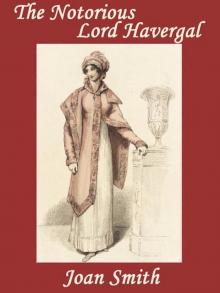 The Notorious Lord Havergal
The Notorious Lord Havergal Romantic Rebel
Romantic Rebel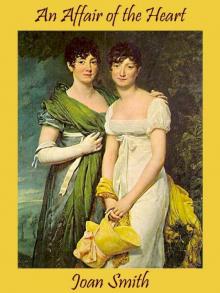 An Affair of the Heart
An Affair of the Heart Wiles of a Stranger
Wiles of a Stranger The Royal Scamp
The Royal Scamp Old Lover's Ghost
Old Lover's Ghost The Virgin and the Unicorn
The Virgin and the Unicorn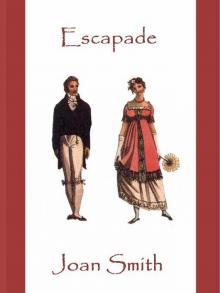 Escapade
Escapade A Christmas Gambol
A Christmas Gambol Cousin Cecilia
Cousin Cecilia Friends and Lovers
Friends and Lovers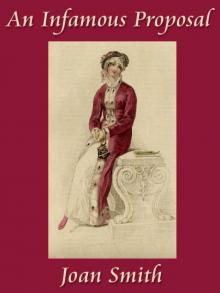 An Infamous Proposal
An Infamous Proposal Regency Masquerade
Regency Masquerade Shadow of Murder
Shadow of Murder Gather Ye Rosebuds
Gather Ye Rosebuds Wife Errant
Wife Errant![[Berkeley Brigade 10] - Shadow of Murder Read online](http://i1.bookreadfree.com/i2/04/11/berkeley_brigade_10_-_shadow_of_murder_preview.jpg) [Berkeley Brigade 10] - Shadow of Murder
[Berkeley Brigade 10] - Shadow of Murder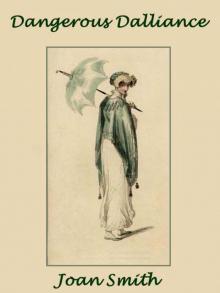 Dangerous Dalliance
Dangerous Dalliance Lady Lorna
Lady Lorna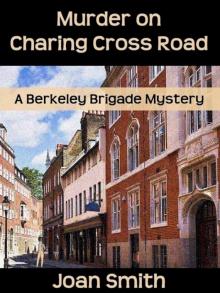 Murder on Charing Cross Road
Murder on Charing Cross Road Rose Trelawney
Rose Trelawney Prelude to Love
Prelude to Love The Spanish Lady
The Spanish Lady Damsel in Distress
Damsel in Distress Oh Miranda!
Oh Miranda! The Blue Diamond
The Blue Diamond